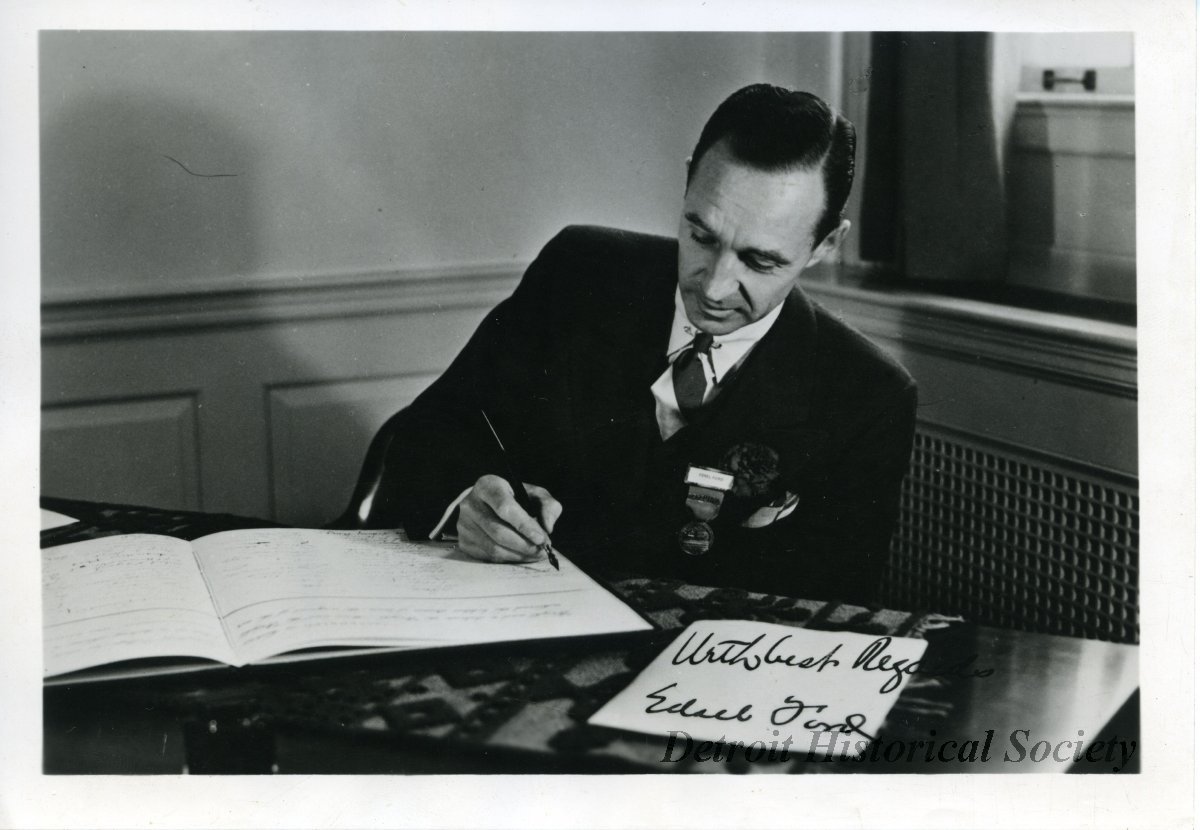The only child of Henry and Clara Ford and third president of Ford Motor Company, Edsel Ford was associated with the design side of the business, while his father dominated the engineering side. Edsel Bryant Ford was born on November 6, 1893 to the couple a short time before they moved to 58 Bagley Street, home of Henry Ford’s car prototype. He studied at the Detroit University School, where he had courses in drafting and engineering, but much of his practical education came from immersion in his father’s company.
He learned the business from the bottom up, helping at the Piquette plant office, and working alongside engineers developing the Model T. In 1916 he took over the job of company secretary. The same year, he married Eleanor Lowthian Clay in the home of her uncle J.L. Hudson on Boston Boulevard.
Ford continued to rise in the family business, going from board of directors in 1916, to president in 1918, when his father retired. Besides being an effective executive, Edsel left his greatest mark on the business when he convinced his father to buy Henry Leland’s bankrupt Lincoln company, which Edsel would run. Here Edsel exhibited his design talent, starting with his selection of the racing greyhound as the hood ornament for the Lincoln Continental. Following the success of the Continental, he was able to finally convince his father to replace the Model T with the Model A, featuring updated mechanical features and styling.
Eleanor and Edsel had four children, Henry II, Benson, Josephine and William. In 1926 the couple commissioned architect Albert Kahn and landscape architect Jens Jensen to design a Cotswold style home and environment for their family on the shores of Lake St. Clair in Grosse Pointe Shores. The house today is a National Historic Landmark.
Edsel Ford’s accomplishments ranged far beyond the automotive field. A patron of the arts, he commissioned the Detroit Industry mural by Diego Rivera at the Detroit Institute of Arts (DIA) and supported the artist when controversy followed. Unlike the Rivera mural at Rockefeller Center, done shortly after the Detroit mural, Ford’s unwavering support means the mural exists today for all to appreciate. Both Edsel and his wife Eleanor were major contributors to the DIA, donating their collection of African art as well as works by Van Gogh, Renoir and Degas. During the Great Depression the couple paid the salaries of employees at the museum.
Ford’s legacy extended to backing Admiral Byrd’s polar and Antarctic expeditions where there are several mountain ranges named in his honor. The Edsel Ford Expressway was also named in his honor in 1946.
Edsel died May 26, 1943 at the young age of 49 from stomach cancer. He is buried in Woodlawn Cemetery.
